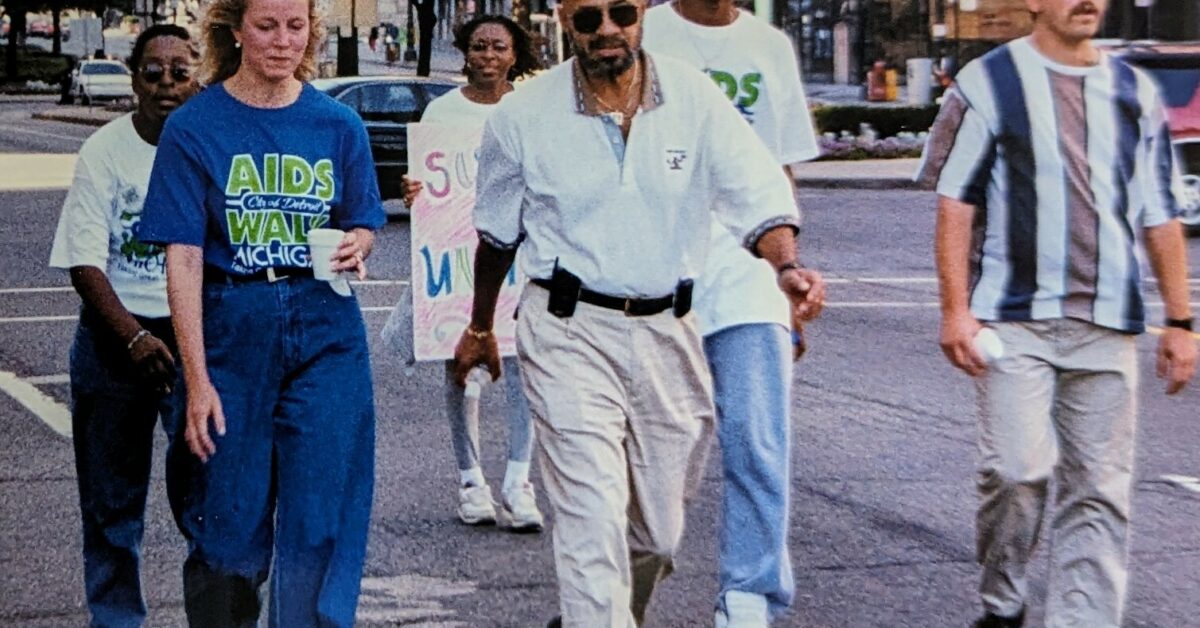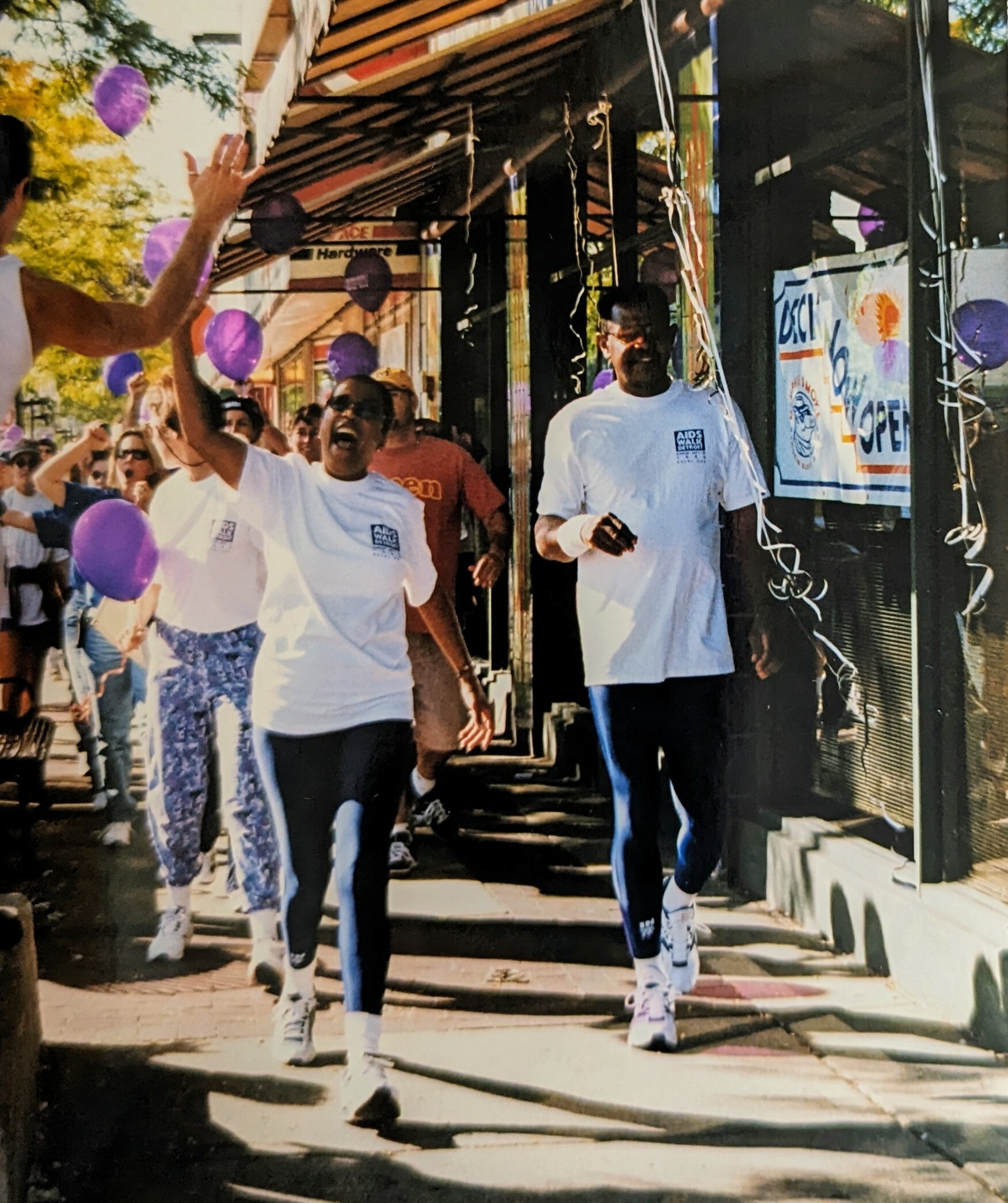Where Have All the AIDS Walks Gone?

AIDS walks used to be a pivotal part of the fall community calendar, and now they’re virtually no more. Once upon a time, they were everywhere in Michigan — some nine across the state with two separate walks representing Detroit. They drew walkers by the thousands and raised substantial sums of money for local agencies working to combat the epidemic.
The first AIDS Walk Detroit (AWD) took place in 1991 in Royal Oak. It was a very grassroots effort put together by a handful of shopkeepers. AWD stood alone for a handful of years and grew quickly in size and scope. In 1999, along came AIDS Walk Michigan (AWM), an initiative to hold walks across the state under one umbrella. At its peak, AWM organized eight walks across the state, including Ann Arbor, Bay City/Saginaw/Midland, Detroit, Flint, Grand Rapids, Kalamazoo, Lansing and Traverse City.
I was at the first AIDS Walk Michigan – City of Detroit back in 1999. The walk was led by then Detroit Mayor Dennis Archer and Sandy Thurman, known as President Bill Clinton’s AIDS czar. The enthusiasm was palpable on this day. Thousands filled Hart Plaza for the warmup and, then, the streets of downtown Detroit. The year 1999 was also the first time I covered AIDS Walk Detroit. This one was started off by then WXYZ Channel 7 Anchor Diana Lewis. The point is, at this time, both of these walks were a pretty big deal.
I continued covering both walks through the years. Corporate sponsors joined the cause. Thousands continued to come out — large employee groups from hospitals and department stores, groups of sorority sisters and, of course, many people who had lost someone they loved to AIDS.
Both walks continued to do well throughout the first decade or so of the new millennium. In 2013, Barbara Murray retired from AIDS Partnership Michigan, the parent group of AWM. She had been a driving force behind the statewide initiative, and no one really stepped up behind her with the same passion. Slowly, the initiative died.

Starting in 2015, AIDS Walk Detroit began seeing a significant dip in numbers of walkers and dollars raised. I wrote a story in 2016 called “Millennials Missing from AIDS Walk Detroit” wherein I talked about the fact that the crowd at the walk was getting old and that the 20-somethings and younger were no longer showing up as they once had. In 2017, the walk raised a mere $50K.
By this time, the walk had been under the control and direction of HELP (now Corktown Health) for a few years. There was a walk planned for 2018, but it had to be cancelled because the usual location in Royal Oak was unavailable due to construction. Then, in 2019, the walk was cancelled amid plans to move it to the city of Detroit. Such a move, organizers found out, would greatly increase the cost of putting on the walk because they’d have to pay for police presence and street closures along the walk route.
And then, in 2020, came Covid. That put the kibosh on any possible walk for the year and, well, as other traditions slowly came back to life in 2021 and 2022 — Pride festivals and the like — AIDS walks continued to peter out. According to Anthony Williams, president and CEO of Corktown Health, AWD is not dead. Just on an indefinite hiatus. It has continued to support activities on World AIDS Day, but, he said, “ I’m not sure when or if there will be another walk because we have not heard from very many organizations interested in participating in a walk.”
There are still a few walks left across the state — the remnants of AWM — in cities such as Lansing/East Lansing and Central Michigan (Mt. Pleasant). But even if the walks are disappearing, AIDS isn’t over. According to UNAIDS, an estimated 1.3 million people became infected with HIV in 2022. Over 40 million people have died of AIDS-related illness since the start of the epidemic. But with PrEP and antivirals, it’s become known as a manageable disease and the sense of urgency to combat it has lessened.
Does Murray think AIDS walks are gone for good? Are they no longer necessary?
“My bias is we need ‘em,” she said. “That’s my bias. Or something that reminds people that here we are doing this and dealing with this. If not an AIDS walk, then what?”
I miss AIDS walks in a strange sort of way. Even though they made me work hard for my money, taking photos every step of the way and then reporting the actual story, there was something special about the walks. A sense of common purpose, a feeling of togetherness and a show of strength against a deadly virus.
Young folks today are not dying of AIDS, not in anywhere near the numbers they once were anyway. Young folks also do not have the fear of AIDS that was ingrained in the people of my generation and those older than me. You get HIV, you get on a pill, you go on and live your life. That’s the mentality today. It’s remarkable and, in a way, a bittersweet sign of progress.
Still, the AIDS epidemic is more than a history lesson. People still do die of AIDS. And the millions who have gone on before deserve their remembrance. We should never forget those we’ve lost to AIDS. It ravaged our community. It took out a whole generation of gay men before it began spreading to others. It was ugly, hideous and horrendous and it must never, ever be forgotten — walks or no walks.










